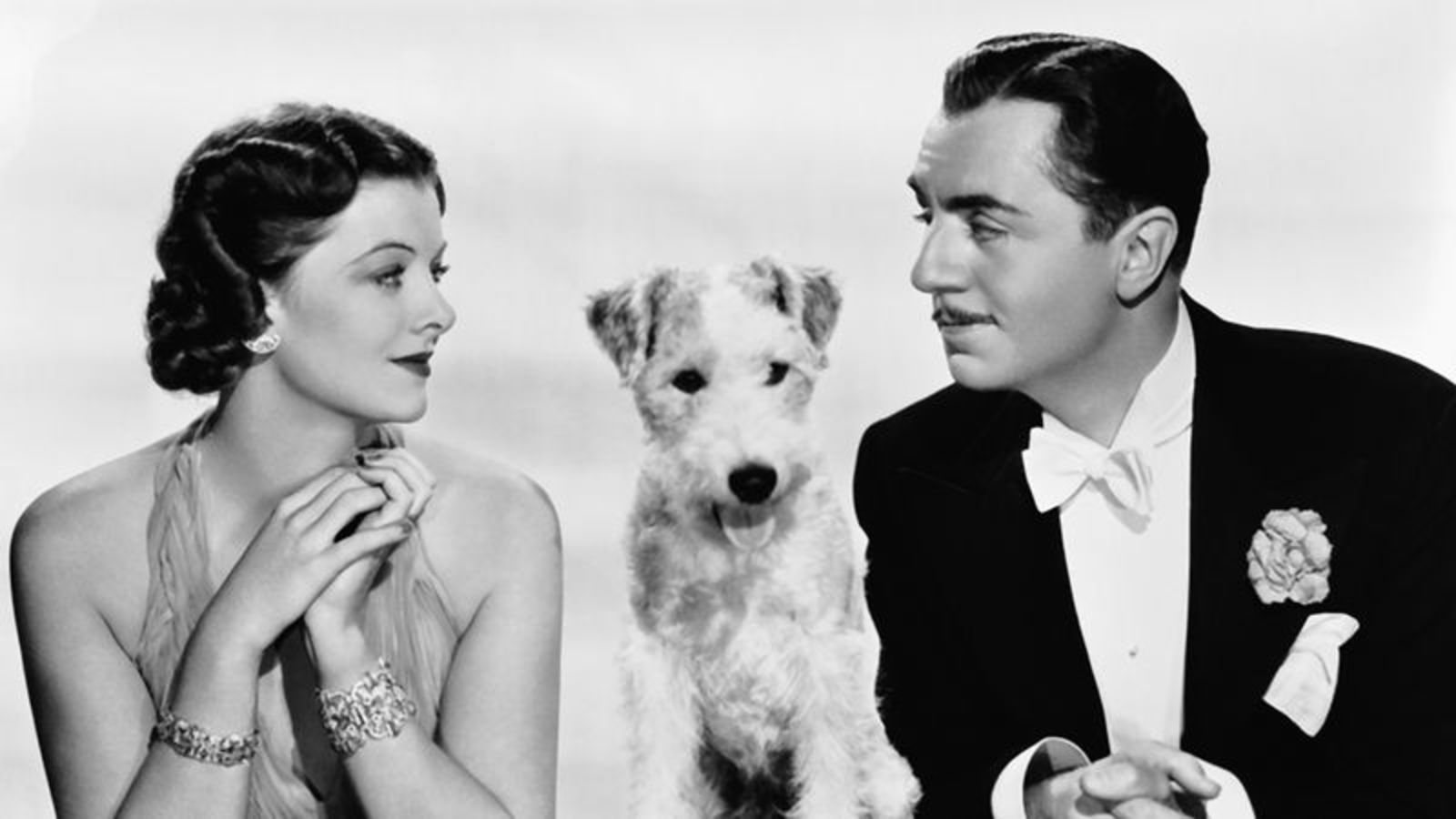
Remembering Powell and Loy: ‘The Thin Man’
Written by: Kimberly Pierce, CC2K Associate Editor
This month classic Hollywood A-listers William Powell and Myrna Loy both celebrated birthdays. Each one stands as a prolific performer in their own right, but Powell and Loy are probably best known for their work as an acting team where the duo appeared in 14 films between 1934 and 1947. The most remembered are the The Thin Man series. Over the next six weeks, we’ll look at the popular MGM detective series and celebrate Powell and Loy’s legendary pairing.
The Thin Man is the first in the titular detective series following the adventures of wealthy crime-solvers Nick and Nora Charles (William Powell and Myrna Loy). This time out, the duo agree to help Dorothy Wynant (Maureen O’Sullivan) in finding her missing father (Edward Ellis). There are twists and turns along the way before the story is neatly wrapped up. W.S. Van Dyke directs from a script by Albert Hackett and Frances Goodrich.
Coming in 1934, The Thin Man is Powell and Loy’s second screen pairing. The film hit theaters in May of that year, premiering just a few weeks after their first film, Manhattan Melodrama. By this time, both were already acting veterans who had made their debuts during the silent era and each had already secured a number of starring roles. However, the success of the crime series propelled both performers to completely new levels of success.

While Nick and Nora are the title characters, they are actually a secondary narrative focus as The Thin Man begins. Viewers don’t meet the couple for 10 minutes. Instead, the audience’s entry point to the story is Dorothy Wynant. We see Dorothy, bubbling with glee at her impending marriage, going to visit her father with her adorably bland fiance (Henry Wadsworth). She remains a primary character, even as Nick and Nora gradually take over the narrative.
O’Sullivan experienced a quick rise to fame, making her initial debut in 1930. In 1932, she appeared as Jane in Van Dyke’s equally well-remembered film version of Tarzan the Ape Man. On-screen, O’Sullivan is young, wholesome and relatable. While the story is packed with colorful characters, criminals, and the witty banter of the Charles’, Dorothy is decidedly “normal” and as such is a perfect point-of-view through which to watch this story.
The Thin Man is based on the Dashiell Hammett novel of the same name, which hit bookstores in January of ’34. The development from page to screen came quickly with The New York Times reporting in the February 13, 1934 issue that MGM secured William Powell to star in the adaptation.
Powell and Loy demonstrate their easy and natural chemistry. Not only are they believable as a romantic couple, but what is most striking is how equally Nick and Nora match up as characters. They are perfectly paired, whether it be in their verbal banter, the action, and drink for drink.

Nora is not simply Nick’s wife or “ball-and-chain.” She’s his partner. More than a century of cinema has established the character archetype of the “supportive wife.” Nora is definitely a “supportive” spouse; however, she’s far more of an active participant in the narrative than many women in similar roles. Nora doesn’t watch her husband work. She spurs him on, moving him towards the conclusion, even when he doesn’t quite want to. She even attempts to join in on the fun, anxious to help him solve the murders. However, she falls for one of Nick’s tricks and ends up stuck in a cab bound for Grant’s Tomb. He needs to keep the little lady out-of-the-way after all. When they are reunited, he asks her how she liked the landmark. Nora’s response is telling in her development, “It’s lovely, I’m having a copy made for you.”
While much of the contemporary discussion revolves around Powell and Loy’s stellar work, The Thin Man features a number of memorable supporting performances which populate the world with a host of colorful and interesting characters. Fans of classic cinema should keep an eye out for a very young Cesar Romero in what is just his second appearance. Another stand-out is William Henry. The young actor features in his first named role, having primarily appeared in uncredited parts. In his take on Gilbert Wynant, he shows a flair for quirky characters and dialogue all trapped in the body of a juvenile male.
The Thin Man is a successful first entry in the franchise, launching both the actors and the creative team into a wave of success which would last well into the next decade. Even in this early installment, the film is well-paced and populated with richly developed characters. There is a lot here to enjoy. Fans of classic cinema should definitely add this one to their list.
Come back next week for our look at After The Thin Man.
